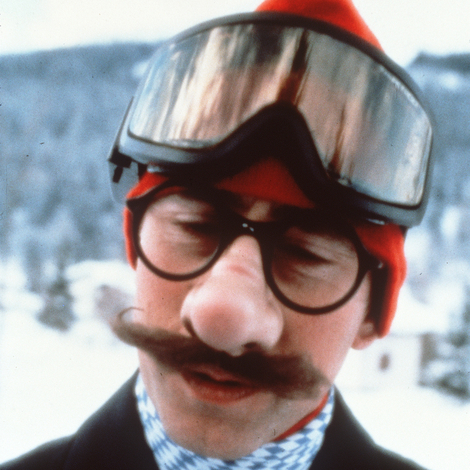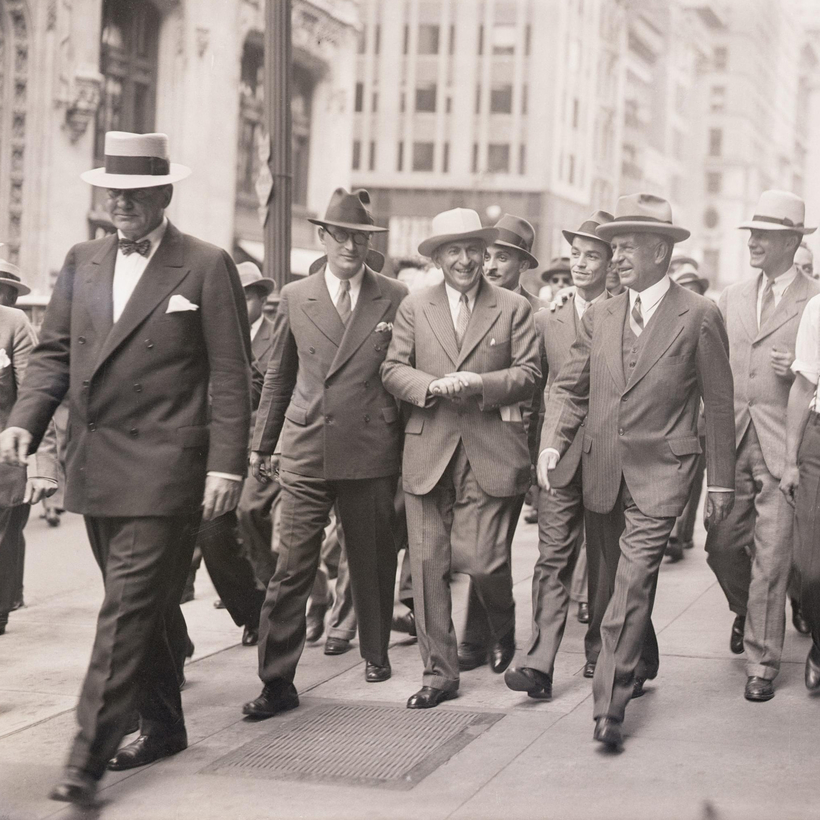Contrary to popular belief, there is only one top financial journalist named Andrew Ross Sorkin. But who could blame anyone for thinking there were three, since Sorkin is not only the founder and editor at large of DealBook, the online daily report for The New York Times, and the co-anchor of CNBC’s morning show Squawk Box, but he also co-created the hit show Billions for Showtime and wrote the best-selling Too Big to Fail. In his new book, 1929, Sorkin takes the most famous stock crash in history and turns it into a thrilling saga of greed, folly, and despair that resonates with present times.
JIM KELLY: Of all the finance books you could have written, why did you choose to write about the Great Crash of 1929? As you point out, the topic has not exactly been under-covered. What do you hope a reader will take away from your book that might not be so easily gleaned from other books?
ANDREW ROSS SORkIN: I wanted to write a true character-driven narrative that would let readers feel like they were actually in the room as the drama unfolded. The Crash has often been told in economic terms or explained in an armchair kind of way—charts, numbers, theories about speculation. But what was missing, to me, were the people themselves: what they whispered in smoke-filled rooms, what they confided in letters, what they scribbled in their diaries when no one was looking.

The truth is, for most Americans 1929 is a hazy conception. And that’s not because they haven’t read enough books; it’s because the full story has never been told in this granular, fly-on-the-wall way. As I dug into the archives, piecing together forgotten diaries, transcripts, and letters, I found myself swept up in a tale with Shakespearean characters—you could admire them, you could loathe them, sometimes both in the same breath.
And when you get in the room with these people—when you can hear verbatim what Hoover was telling Thomas Lamont, or what Charles Mitchell confessed to his wife at home, or what Carter Glass really thought of the bill that’s named after him—you realize just how much of the history we thought we knew is incomplete. Despite everything I believed I already understood, I kept uncovering surprises, twists that changed the way I saw this period. And while it was never my intention when I started this project, so much of what was happening then seems to rhyme with what’s happening today.
J.K.: You do a terrific job of setting the stage for what happened in 1929, including the rise of the Wall Street tycoon as a cultural figure in the 1920s. Folks like Bernard Baruch joined the celebrity ranks of Babe Ruth and Charles Lindbergh. Did the awe many Americans had for these financial wizards help induce a kind of blind worship for the market?
A.R.S.: Yes—and what struck me in the research was how consciously these men were cast as folk heroes. You open a magazine from the 1920s and there’s Baruch, written about with a sense of awe. It was the coming of age of capitalism, when wealth itself became a stand-in for genius. That celebrity aura gave people permission to suspend skepticism, to believe the market was guided by men with almost supernatural instincts. And just like in any great drama, the worship turned into disillusionment once the curtain fell. In many ways, it set the stage for today—where financiers like Jamie Dimon, Stephen Schwarzman, or Elon Musk occupy the same space in our cultural imagination.
J.K.: You shape part of your story around Lamont, who, in effect, ran J. P. Morgan & Co. What lesson did you draw from his career?
A.R.S.: Lamont believed that if you could put a couple of great men in a room, you could solve anything. That was his worldview—finance and politics weren’t about systems, they were about personalities. He was also the ultimate relationship man. When I was in the archives, I’d find him everywhere: dining with Mussolini, meeting with Hitler, negotiating with Hoover, then turning around and trying to charm Roosevelt. He thought diplomacy, persuasion, and personal gravitas could hold the world together. And for a while, it seemed to work—until it didn’t.
J.K.: A disaster like 1929 has many fathers, but is it fair to say easy credit and buying on margin are the main culprits for the crash? And in that sense, despite tighter regulations today on margin buying, is it fair to say that too many Americans have too much money invested in stocks today? Or, to put it another way, do too many Americans disregard the chances of a crash that could take years to recover from?
A.R.S.: I have a somewhat counter-intuitive answer. Every crisis is ultimately a function of too much leverage—that’s always the accelerant. And then you marry that with runaway speculation. But one of the lessons I came away with—that surprised me a bit—is that speculation in itself isn’t the villain. In fact, speculation is what fuels innovation. The challenge is knowing how to keep it from boiling over.
So when you ask if Americans have too much money in the market today, I hesitate to say yes. If you look back over the last hundred years, you would have done far better being invested than sitting out. There will always be crashes, painful drawdowns, moments that feel endless. But history suggests the greater risk isn’t being in the market—it’s being left out of it.
J.K.: Once the market collapsed, was there a single act that could have been done before F.D.R. became president, in 1933, that would have stopped the decline? There was a brief rally in 1930, which I assume gave folks false assurance.
A.R.S.: So many things went wrong. It was a series of dominoes. The Federal Reserve would have needed to flood the system with liquidity to keep the banks standing. Hoover would have needed to block Smoot-Hawley, which he had actually campaigned on, instead of signing it into law. And above all, the government would have needed to restore confidence at a moment when every move seemed to erode it further. What’s chilling is reading the letters from 1930 during that brief rally—you can feel the relief, people writing as if the nightmare had passed. But underneath, the foundations were cracking.
J.K.: Good news! I am not going to ask about tariffs! But I am going to ask you about Jerome Powell and to rate the job he has done as the head of the Federal Reserve. And if there was a Mount Rushmore for Fed chieftains, who are the four you would place there?
A.R.S.: I think Powell has done quite well. History will likely look fondly on him, especially given how fiercely his independence is being questioned in the political arena. He steadied the financial system during the pandemic, then faced down the toughest inflation in a generation. He wasn’t always early, but he was pragmatic, and that pragmatism mattered.
If I were carving a Fed Mount Rushmore, Marriner Eccles would be there for remaking the institution during the Depression. Paul Volcker, for his superhuman resolve against inflation. Ben Bernanke, who drew on his study of the 1930s to stop 2008 from becoming another Great Depression. And Alan Greenspan—complicated though his legacy is—because he defined an era and still casts a long shadow. I don’t know if Powell should end up on the mountain, but he’s earned his place in that lineage.
J.K.: I am going to go out on a limb here and guess that as a young kid growing up in Scarsdale, New York, you did not dream of becoming a financial journalist. Or maybe you did, regaling playmates with vintage tales of I.T.T. in its conglomerate years! Was there an aha moment as a young person when you realized that this field was the one you wanted to till? Did a book or person exert an especially big influence?
A.R.S.: I definitely did not dream of becoming a financial journalist. But I did want to do something in media—I loved magazines. What your friend Graydon was doing at Spy was magic to me. I started my own magazine when I was 15. At the same time, I was fascinated by great business stories. I remember being absolutely enamored with Jim Stewart’s Den of Thieves in high school.
When I was 18, I went to work as an intern for Stuart Elliott, the advertising columnist at The New York Times. I had no intention of putting two words together, let alone a sentence. But one day I was somewhat accidentally asked to write an article—the assigning editor didn’t realize how young I was—and that was it. I was off to the races.
J.K.: Finally, how do you relax, and where do you even find the time for it? Early hours, late hours, working both on TV and in print, and not to mention writing this book, which took eight years. Do you multi-task, reading Warren Buffett annual shareholder letters to your kids at night or taking your wife to an M&A closing dinner on date night?
A.R.S.: The truth is, I don’t relax easily. I wish I did. Some people play golf; I’m the person who sits on the beach with a laptop, working on vacation. My kids think I’m a bit nuts, but I like to believe—or at least I tell myself—that they appreciate how special it is to find something you love to do. I’m lucky that way. I sort of breathe my work—so it doesn’t really feel like work. It’s what I’d be doing anyway.
Jim Kelly is the Books Editor at Air Mail

